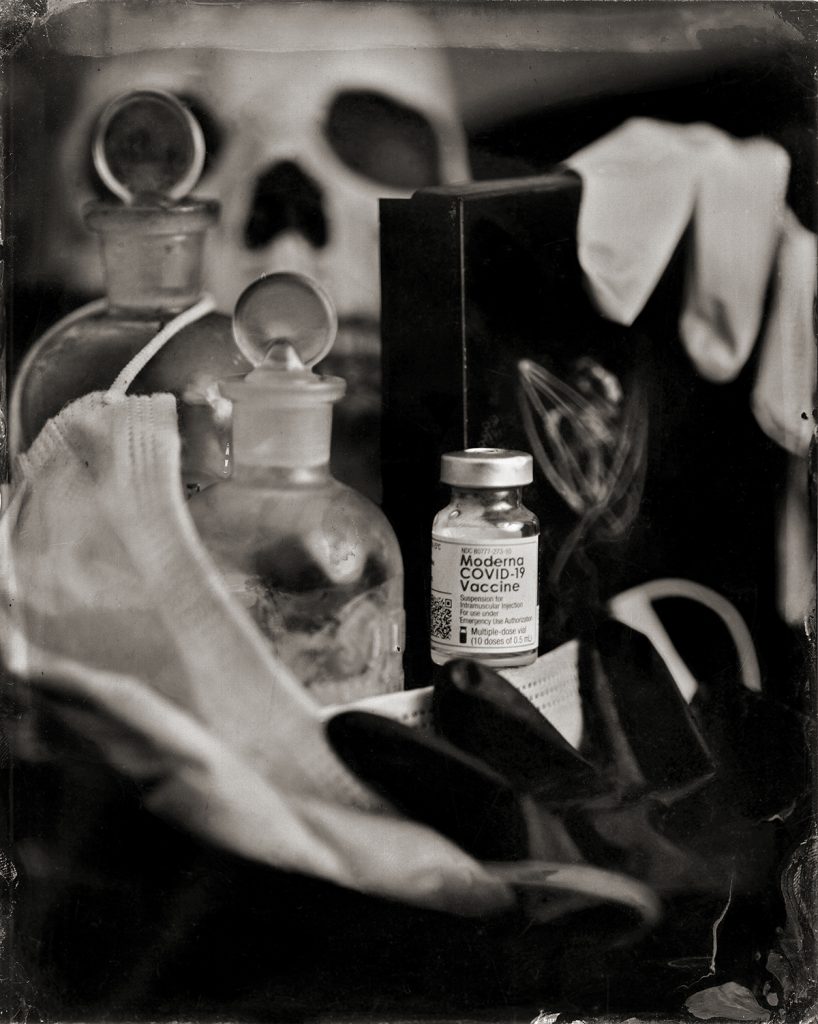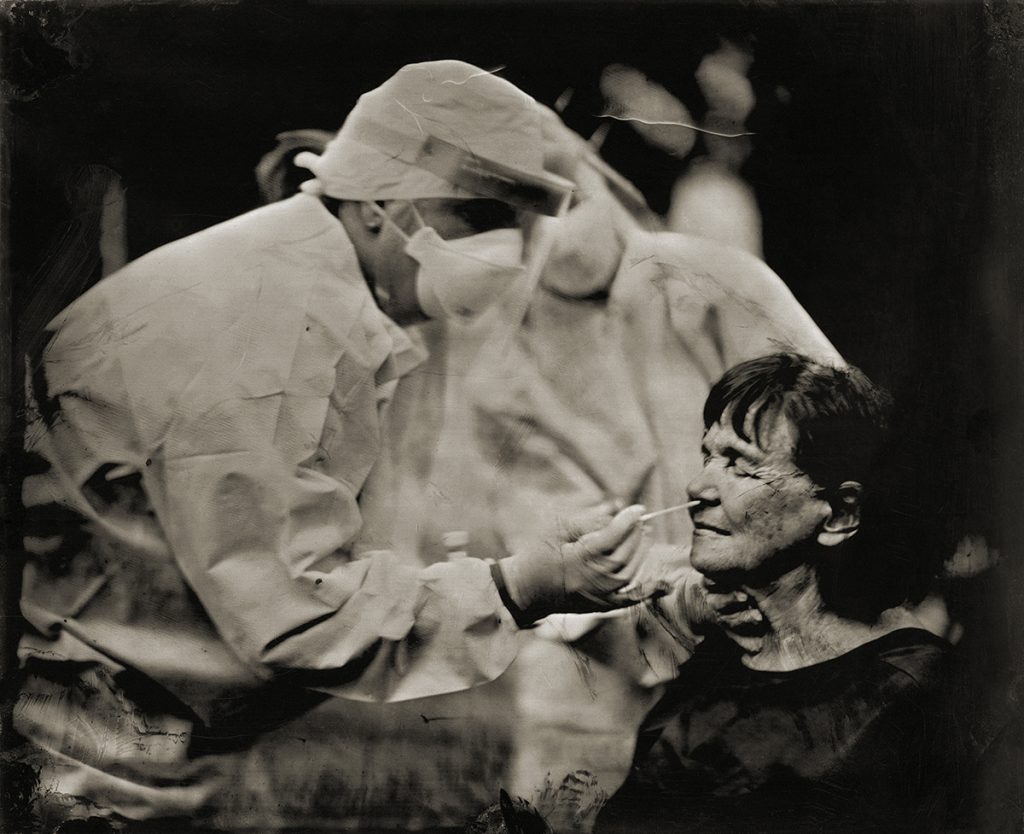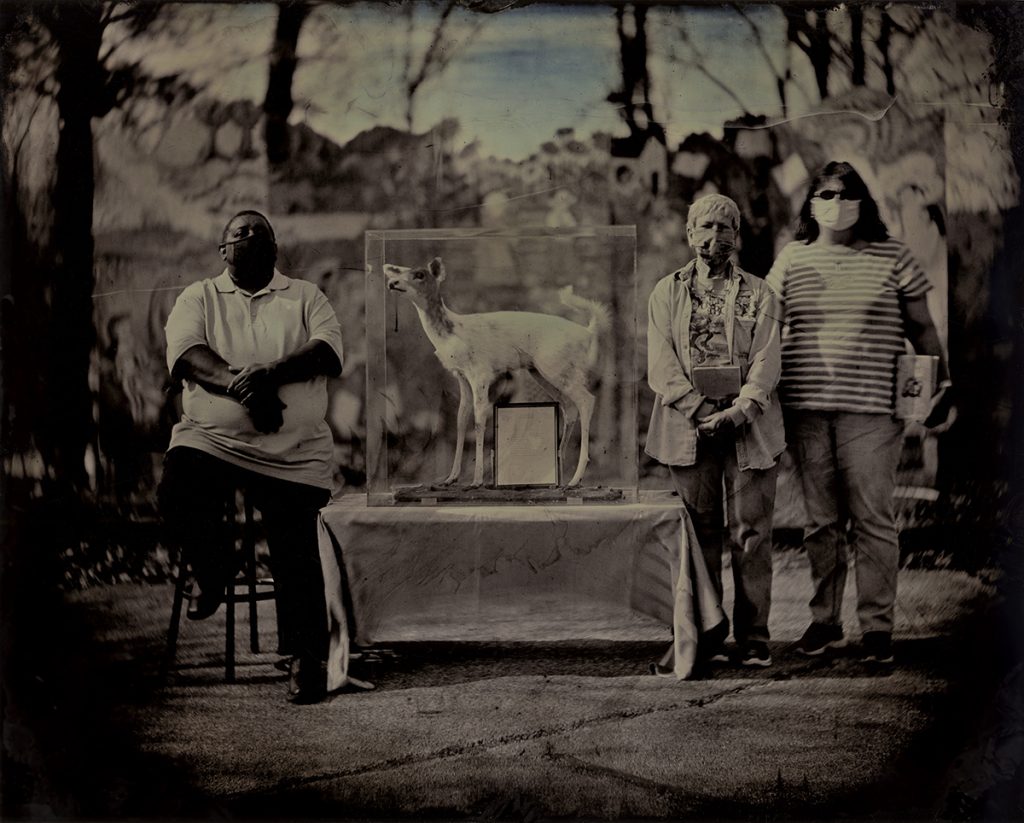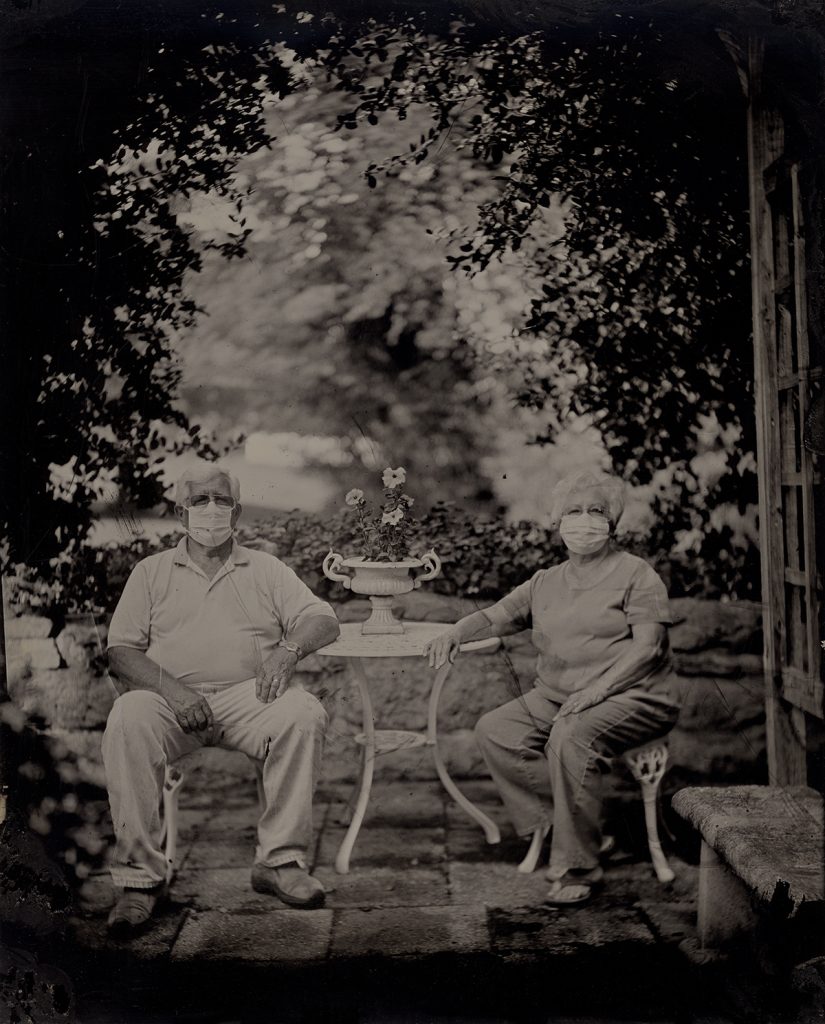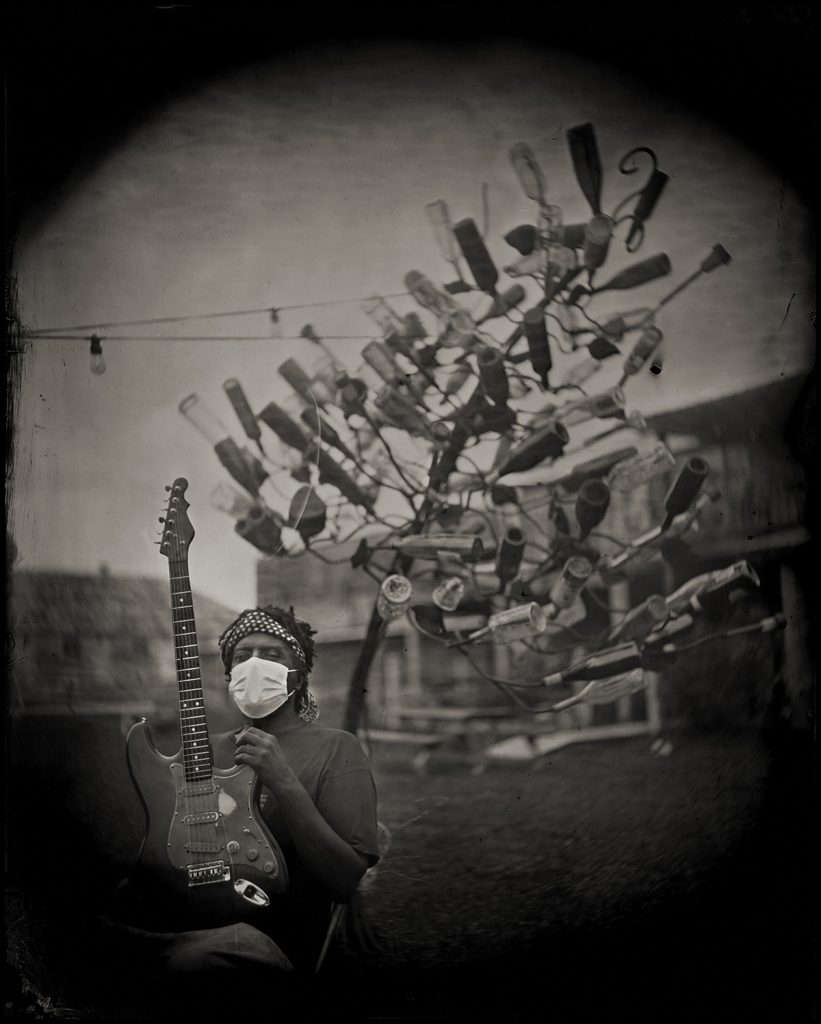Bill Steber
Bill Steber
“If we were not so single-minded
about keeping our lives moving,
and for once could do nothing,
perhaps a huge silence
might interrupt this sadness
of never understanding ourselves
and of threatening ourselves with
death.
Perhaps the earth could teach us;
everything would seem dead
and then be alive”
— Pablo Neruda, excerpt from “Keeping Still”
COVID-19 changed many things, but none more than our relationship to time itself. After decades of life constantly speeding up in the information age, a year of lockdown and isolation brought the Great Pause. Time often seemed interminably slow, suspended in solution, and then suddenly, weeks, even months were gone in a flash. Time was mutable, elastic, elusive.
My contributions to this exhibit were all made with antique cameras utilizing the wet plate collodion photographic process from the birth years of photography, a much slower time.
These portraits and still life are about the pandemic, but they are also about time itself. They are contemporary images cloaked in the visual artifice of an earlier age, connecting the two via silver on metal plates exposed through old brass lenses.
During the long exposures required to make these images, ranging from several seconds to several minutes, the sitter must be very calm and still, dropping the easy snapshot expression for something deeper and more self-reflective, not unlike the experience of the past 16 months.
Now, as the treadmill of life begins its relentless forward motion once again, demanding speed and productivity, it is my hope that we can retain some of the benefits of slowing down, of keeping still, so that our daily experience can momentarily hold itself in a suspended solution and make for each of us those important moments into permanent, if imperfect, images.
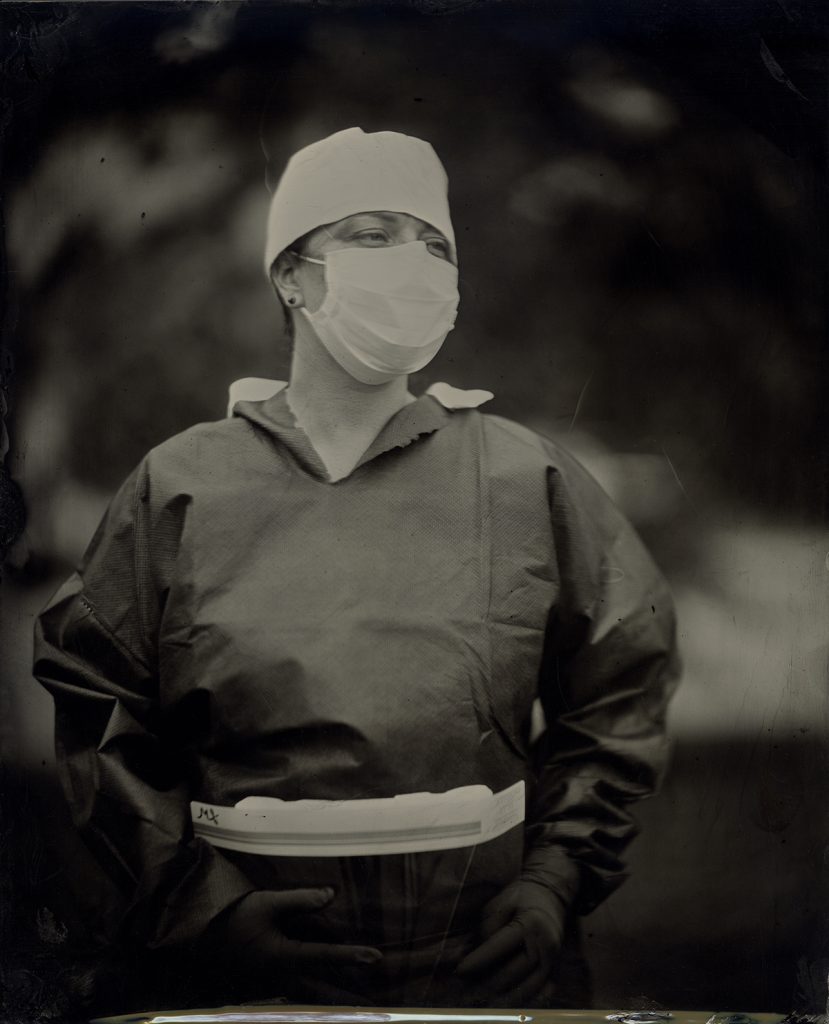
Bill Steber. Carbon print from wet plate collodion tintype.
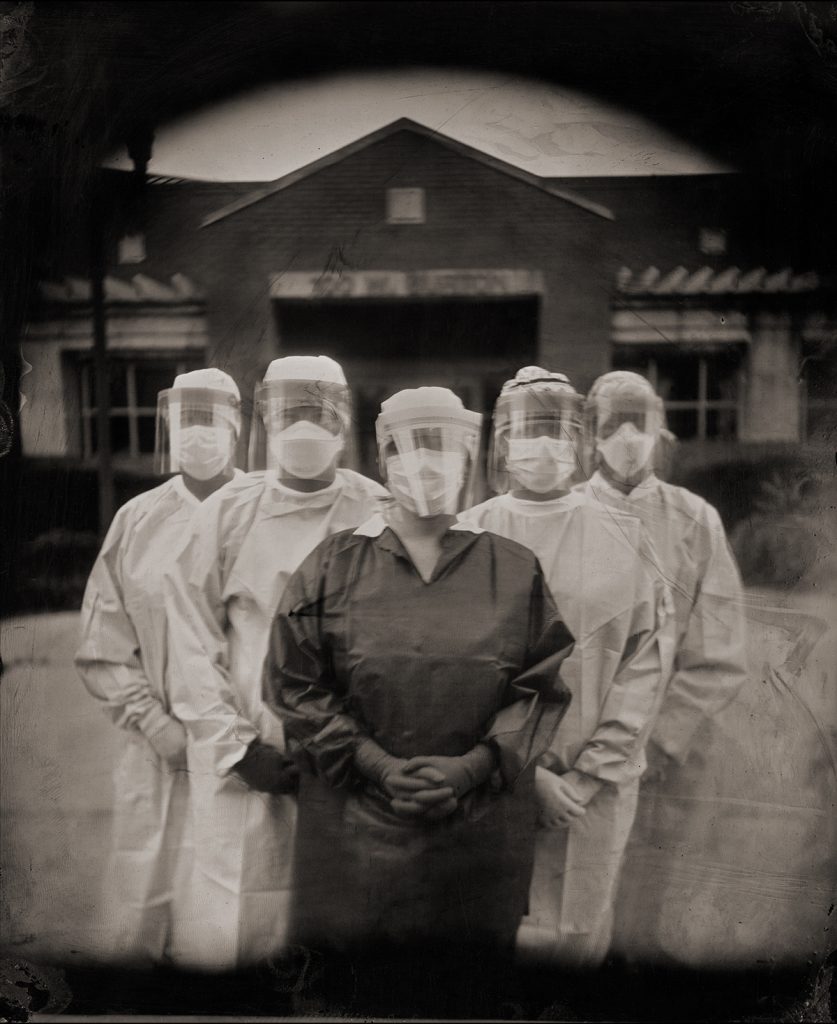
Bill Steber. Carbon print from wet plate collodion tintype.
Technical Statement
The photographs that I’ve included in this exhibit each originated as a wet plate collodion tintype or ambrotype. They were made with cameras and lenses over a century old, using the exact same techniques employed by photographers from 1851 until about 1890 when wet plate was the primary photography technique.
Each image begins as an 8×10 piece of metal or black glass which is coated in a viscous gold liquid called collodion (gun cotton and ether) that has been infused with various salts. This plate is then submerged in a bath of silver nitrate for 3 minutes. Once the silver nitrate is fully absorbed into the collodion, the various added salts make the silver halides light sensitive. The plate is then removed from the bath in a portable darkroom on site and placed into a light-tight plate holder. This holder is attached to the back of the 8×10 view camera where the final exposure of the subject will be made. These exposures took between 6 seconds and 3 minutes, depending on light conditions.
The plate is then immediately developed, fixed, and washed in the field. The entire process takes up to 30 minutes for a single image. After drying, the plate is then coated with a lavender gum sandarac varnish and heat dried over a coal oil lamp to protect the delicate surface of the image.
The print you now see was made from this finished plate using another 19th century print process called carbon printing.
To make the carbon print with the tintype rather than a glass negative, 21st century scanning is employed. An enlarged digital version is printed in negative on clear acetate using an inkjet printer. This large negative is placed against a 16×20 piece of “tissue,” which is a plastic yupo base prepared with gelatin that has been pigmented with india ink and pre-sensitized with a UV light sensitive chemical. Both negative and tissue are placed into a vacuum-sealed UV exposing machine for about 10 minutes. Afterward, the exposed gelatin tissue is placed in water for 5 minutes and then married to a piece of 16×20 photographic paper and placed under pressure for 20 minutes. When placed in warm water, the yupo comes off, revealing the transferred positive image on the photographic paper. And this final image, delineated in pigmented gel, is what is framed and shown (displayed) in our pandemic exhibit.

